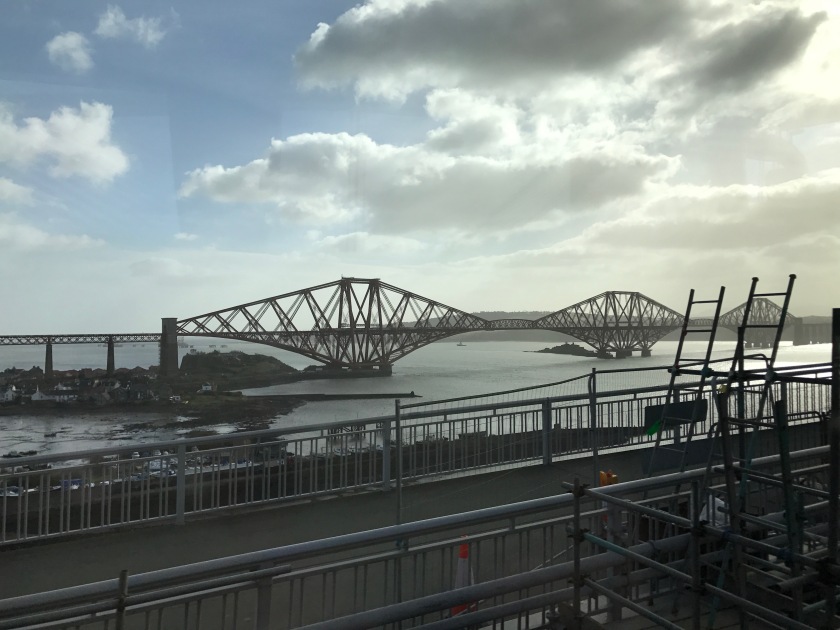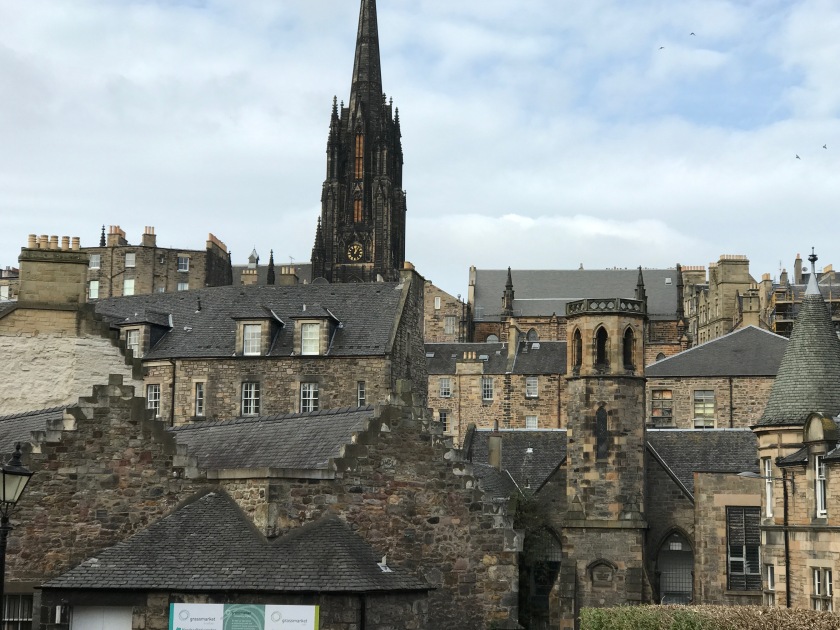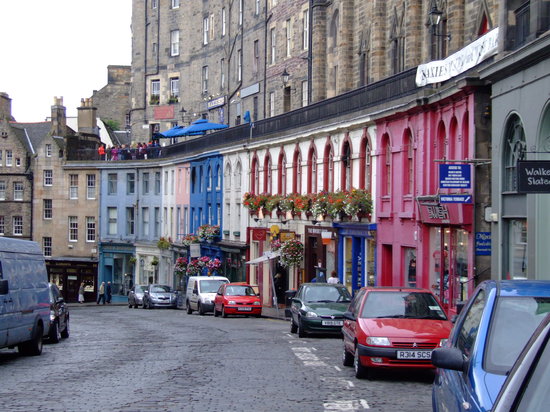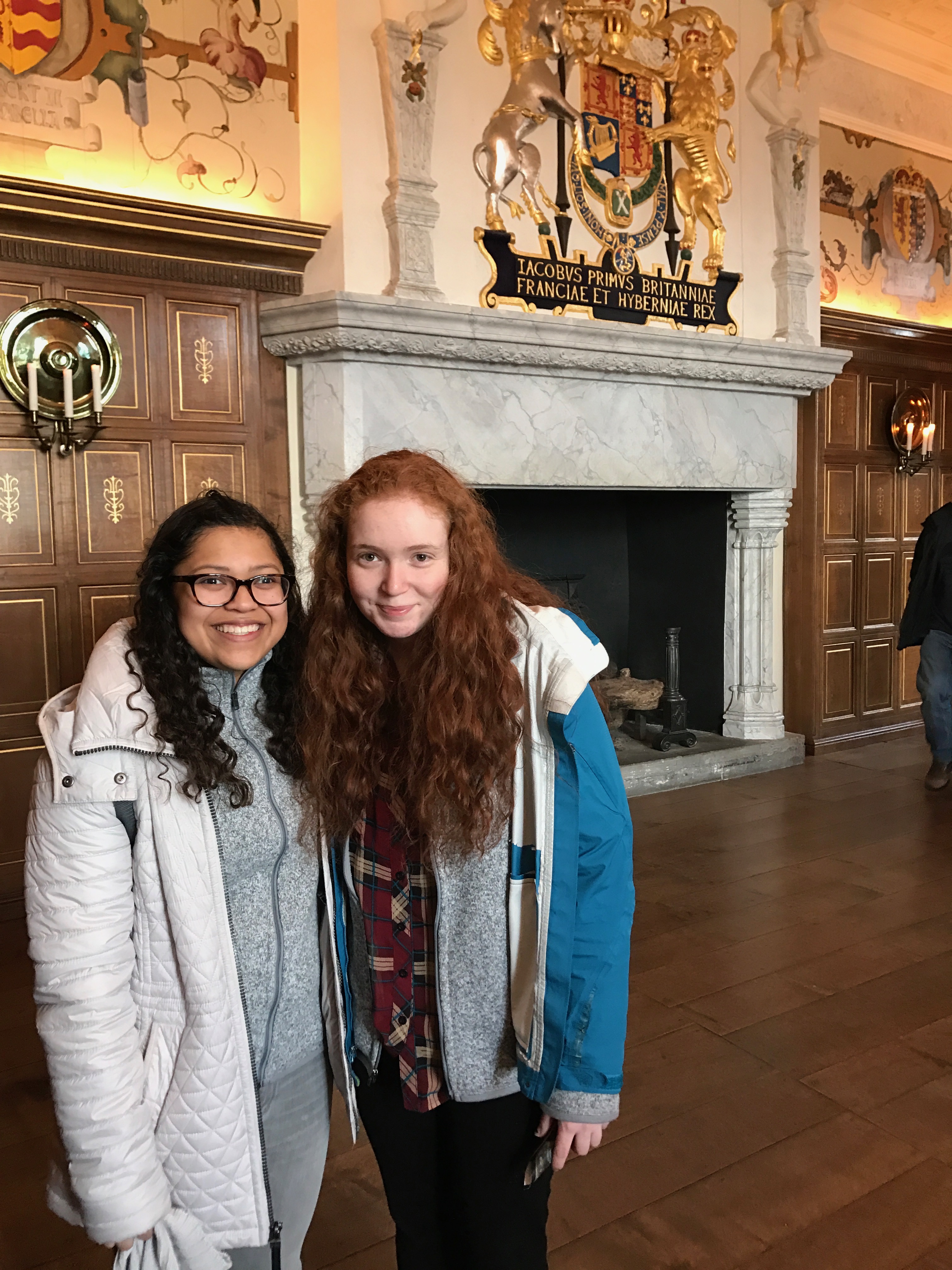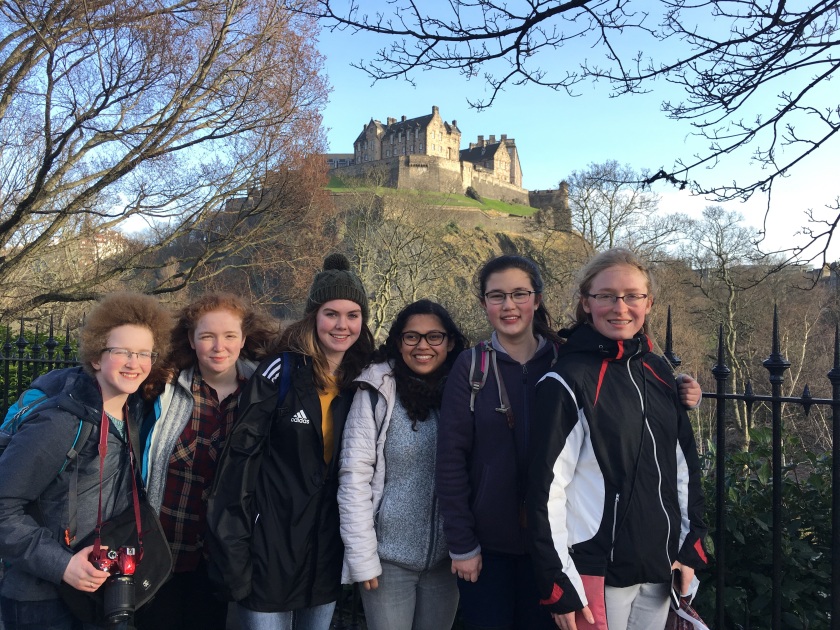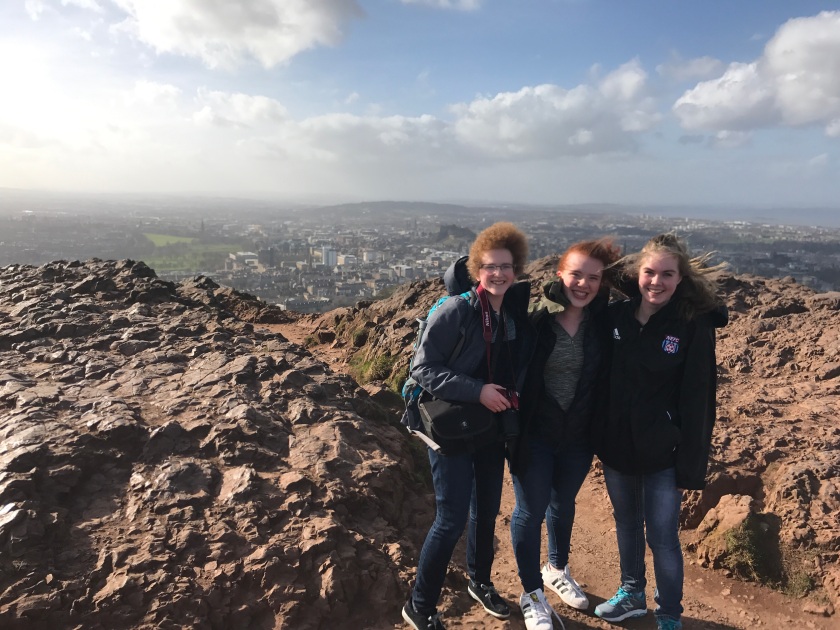Leaving the Highlands Monday morning bound for Edinburgh, the capital city of Scotland, we crossed into the green lowlands of Fife and over the Firth of Forth where we got great views of the Forth Rail Bridge, the world’s first steel cantilever bridge and a UNESCO World Heritage Site. Once on the southern shores of the firth, we were soon in the city Sir Walter Scott referred to as “yon Empress of the North.”
Edinburgh is a beguiling city with a history dating back over a millennium. Built on a long spine of volcanic rock, earliest settlers quickly saw the advantages of a fortress at the top of the spine, and the town developed downward from there. In Medieval times, Edinburgh’s citizens crammed inside its walls built ever higher, leading to the some of the first “skyscrapers” in urban history. With people piled on top of each other and no real plumbing to speak of, waste from families stacked ten and twelve stories high was thrown into the streets and ran into Nor Loch where it festered. Travelers to Edinburgh could smell the city well before they could see it, and it earned the nickname “Auld Reekie.”
By the 1700s, however, Edinburgh was experiencing an economic, cultural, and intellectual rebirth, and it became the center of innovation of all kinds. Such luminaries as Adam Smith, Robert Louis Stevenson, Robert Burns, David Hume, Allan Ramsay, Thomas Carlyle, Arthur Conan Doyle, Alexander Graham Bell and many more called Edinburgh home, and with the likes of Charles Darwin, James Hutton, Joseph Black doing seminal work at Edinburgh University, it is no wonder why the city has been called “the Athens of the North” and a “hot-bed of genius” by writers of the 18th and 19th centuries.
We spent most of our first day exploring the city by ourselves, with students breaking into groups to walk the streets, investigate the mysterious wynds and closes that branch off the Royal Mile, pop into the many free museums, or toss a rugby ball around in the Princes Street Gardens, Edinburgh’s central park that was created from the drained cesspool that was Nor Loch. Our second day began with a guided tour of both New Town (created in Georgian times to accommodate both population growth and rising prestige) and Old Town, with a stop at the Palace of Holyrood House and a walking tour of the imposingly massive Castle. Within the buildings of Edinburgh Castle, we saw the room where Mary, Queen of Scots gave birth to her only son who would become James VI, King of Scotland, and, after the death of Queen Elizabeth, James I, the first king of a unified Great Britain. We also looked at the Scottish Crown Jewels, secreted away from Oliver Cromwell and then lost for almost 200 years, and the Stone of Scone (known in England as the Stone of Coronation), which was used for centuries in the coronation of Scottish kings and was only returned to Scotland by Queen Elizabeth II in 1996. After leaving the Castle, we again broke into groups, with one particularly energetic and adventurous trio of girls hiking up Arthur’s Seat, the long dead volcano that looms over the city from the east.
Over a dinner of pizza and pasta, we shared our stories of the day’s explorations, looked back on our eight days in Celtic Britain, and hoped that the blizzard back home wouldn’t delay our return to friends and family in Massachusetts. Keep your fingers crossed for us!
